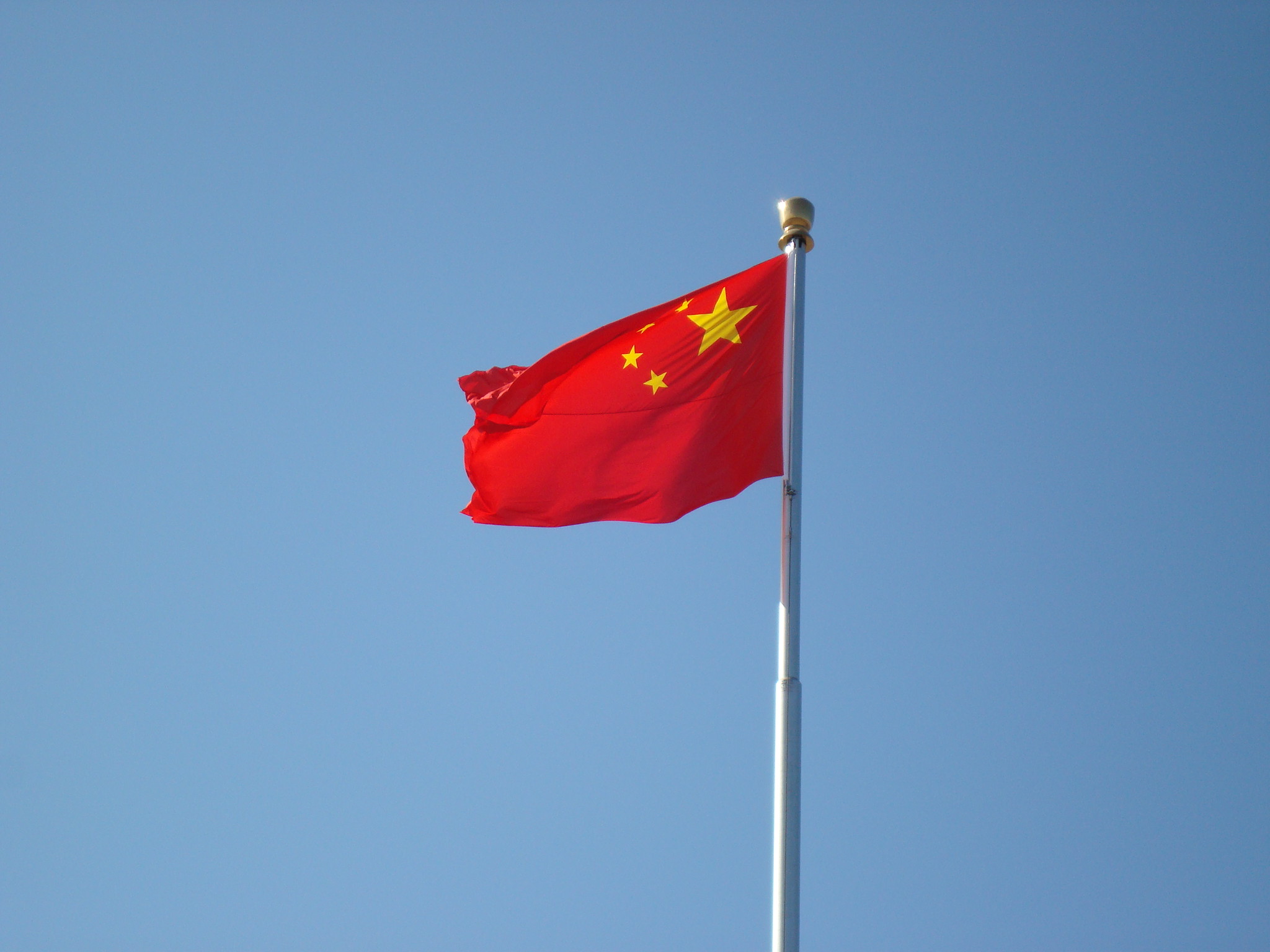The Importance of ‘Biological Destruction’ in Responsible Coverage of Xinjiang
While the common understanding of “genocide” focuses on mass killings, international law embraces “biological destruction” as a form of genocide. Euro-American coverage of the Xinjiang crisis often fails to bridge these competing understandings.

Published by The Lawfare Institute
in Cooperation With

Recent news coverage of the ongoing situation in Xinjiang has focused on whether or not those events meet the international legal definition of genocide. Declarations by both the Trump and Biden administrations, Canada, and the Netherlands have all stated that China’s treatment of the Uighurs constitutes genocide. Thoughtful and well-researched media coverage of the Xinjiang crisis is extremely important. However, the majority of nonacademic pieces seem to presume that if genocide is occurring, it must be a particular kind of genocide—the kind with torture and mass killings, like we saw in the Holocaust, Yugoslavia or Rwanda. As a recent article in The Economist put it, “‘genocide’ means killing a people. China’s persecution of the Uyghurs is horrific …. But it is not slaughtering them.”
It’s not just The Economist: There is a common disconnect between popular definitions of genocide—which typically draw comparisons to atrocities like the Holocaust—and the more nuanced definition of genocide in international law, established by the 1948 Convention on the Prevention and Punishment of the Crime of Genocide (to which China is a party) and restated in the Rome Statute for the International Criminal Court (to which China is not). This post doesn’t take a firm position in the genocide debate, which implicates the thorny question of “intent to destroy,” the mens rea of genocide at international law. Rather, I seek to draw attention to the biological implications of the Uighurs’ suffering—an issue sometimes overlooked by mainstream coverage of Xinjiang—which has an important bearing on the actus reus of the crime of genocide.
To be clear: Media coverage detailing the appalling accounts of systematic rape and torture of members of the Uighur group in Xinjiang is extremely important. As journalists’ access to the region becomes increasingly restricted, it is critical that any extant evidence of atrocities be preserved. But it is equally important that journalists cover all aspects of the situation unfolding in Xinjiang, including biological and social destruction that doesn’t fall neatly within the popular “slaughtering” concept of genocide articulated in The Economist.
Applying the Genocide Convention to Xinjiang
The Genocide Convention, and relevant provisions of the Rome Statute, articulate a much broader definition of genocide than is commonly understood. Article II of the Genocide Convention, and Article 6 of the Rome Statute, identify five actus rei, each independently sufficient to constitute genocide:
- Killing members of the group;
- Causing serious bodily or mental harm to members of the group;
- Deliberately inflicting on the group conditions of life calculated to bring about its physical destruction in whole or in part;
- Imposing measures intended to prevent births within the group;
- Forcibly transferring children of the group to another group.
Whereas the popular concept of genocide tends to resonate with the first two actus rei, especially mass killings, the situation in Xinjiang is arguably more consonant with the latter two: birth prevention and the forcible transfer of children. Given the apparent expansion of internment camps throughout Xinjiang, there is certainly an argument to be made that the situation might also qualify as genocide under subsection (c)—but given this post’s focus on “biological destruction,” and the corresponding wealth of biologically relevant evidence, I focus on subsections (d) and (e).
There have indeed been allegations of death and torture in China’s archipelago of “vocational training centers” in Xinjiang, which would satisfy subsections (a) and (b) of the Genocide Convention. These allegations of torture are typically based on eyewitness accounts, which are summarily dismissed as lies by Chinese state media. While media coverage of such allegations is extremely valuable, it need not crowd out analysis of biological measures, which are equally criminalized under the Genocide Convention. This potential crowding out is especially concerning because there is robust statistical evidence—including from official party-state documents (analyzed here and here)—that illustrates the depth and breadth of China’s aggressive birth control strategy in the region, as well as the separation of Uighur children from their parents. If the data are accurate, these findings could satisfy the actus reus requirements of sections (d) and (e) of the Genocide Convention, respectively.
With respect to birth prevention, Chinese government statistics show that the birth rates in largely Uighur Hotan and Kashgar (both in Xinjiang) plummeted 60 percent from 2015 to 2018, while the national birth rate remained relatively stable. In four largely Uighur southern prefectures of Xinjiang, Chinese government documents (archived in Chinese here) analyzed by Adrian Zenz set a goal of subjecting more than 80 percent of women of childbearing age to “long-term” birth control measures. Those long-term birth control measures are frequently unique IUDs that can be removed only by government personnel. Between 2014 and 2018, Xinjiang’s share of newly placed IUDs throughout China rose from 2.5 percent to 80 percent, despite the fact that Xinjiang’s (plurality-Uighur) inhabitants constitute less than 2 percent of China’s overall population.
Robust data also exist regarding the transfer of Uighur children. Chinese government documents (archived in Chinese here and analyzed by Zenz here) confirm that large numbers of Uighur children have been separated from their parents. Satellite data reveal “explosive growth” in the construction of residential “preschool” facilities in Xinjiang. State media reports (archived here and here in Chinese, analyzed by Zenz here) acknowledge that some preschools in the region admit children at less than a year old so that their parents can engage in “carefree study” in the vocational training centers, and they admit that in some cases enrollment in state boarding schools is not voluntary. State media reports that present evidence of biological destruction also illustrate the limitations of that evidence, at least in the context of genocidal mens rea. Potential perpetrators may turn to these statements as evidence that measures that may objectively result in biological destruction were not intended to cause that result, leaving the conduct far short of the extraordinarily high standard for genocidal intent—that is, “intent to destroy, in whole or in part, [the group], as such.”
On its own, the forcible transfer of children is sometimes identified as a vestigial form of “cultural genocide”—that is, the destruction of a group’s culture without physically or biologically extinguishing members of the group—which was contemplated in the travaux of the Genocide Convention but ultimately dropped from the final document. The legal import of cultural genocide is a hotly debated topic among scholars of international criminal law (see influential perspectives here, here and here). Rather than enter this complex debate, I adopt the insight of leading commentator Claus Kreß and continue under the assumption that the forcible transfer of children constitutes “a subtle form of biological genocide” and constitutes “destruction” insofar as it limits the group’s reproductive capacity in line with subsection (d).
The concept of cultural genocide illustrates further divergence between social and legal concepts of genocide. For example, the abhorrent treatment of indigenous peoples in North America has been designated by the Canadian government as a cultural genocide, allowing the state to publicly assume responsibility for its conduct while apparently avoiding international criminal liability. By focusing on the physical and, where appropriate, biological elements of the crime of genocide, coverage of crises like Xinjiang can prevent states and officials—not only in China but also in Canada and the U.S.—from potentially avoiding international legal responsibility by strategically deploying the “cultural genocide” appellation.
The Importance of Highlighting Biological Destruction
The existing evidence potentially supporting a finding of genocide in Xinjiang largely goes to so-called “biological destruction,” the amalgamation of sections (d) (birth prevention) and (e) (forcible transfer of children) under Article II of the Genocide Convention. An unnamed American official recognized as much, noting that these provisions undergirded the State Department’s rationale for applying the genocide label. However, Euro-American news coverage of birth control efforts in Xinjiang (for example, here and here) tends to focus on the events as existing alongside genocide, rather than as evidence of genocide itself.
This isn’t to say that nobody has mentioned the possibility of biological genocide occurring in Xinjiang. Donald Clarke issued a spirited rebuttal of The Economist article quoted above. Beth Van Schaack has noted that while biological genocide has never supported a conviction for genocide on its own, measures employed against the Uighurs would appear to satisfy the definition outlined in Article II (d-e) of the Genocide Convention. Citing Van Schaack, a recent Foreign Policy article noted the discrepancy between public perceptions of genocide and its more nuanced legal definition, which includes biological destruction.
Given the vanishingly small likelihood of state or individual responsibility being imposed for atrocities in Xinjiang by an international tribunal, it may seem pedantic to highlight the relative lack of emphasis on “biological destruction” in Euro-American media. There are, however, two reasons why the media coverage of events in Xinjiang remains important.
First, as Foreign Policy noted, there is a pervasive misconception of genocide as limited to mass killings. Without more nuanced, accessible analysis of the definition of genocide in international law, this misconception is likely to persist, and, as a result, heinous acts of biological destruction will not be appropriately condemned as genocide.
Second, the failure to consider biological destruction is especially concerning in light of an emerging discourse describing the situation in Xinjiang as “cultural genocide,” a term that is not mentioned in the Genocide Convention and that remains debated by international criminal law scholars. “Cultural genocide” has been named in only one international instrument—the nonbinding 1982 UNESCO Declaration of San José. Even more concerning is the description of events in Xinjiang as “demographic genocide,” another term that doesn’t appear in the text of the Genocide Convention but that, under any reasonable reading, would appear to fall within subsection (d) on prevention of births or (e) on transfer of children, rendering the “demographic” qualifier superfluous. These constructions are likely to further complicate an already delicate area of international law, with the result that the condemnatory power of “genocide”—that is, “the crime of crimes”—will be irreversibly diluted.





